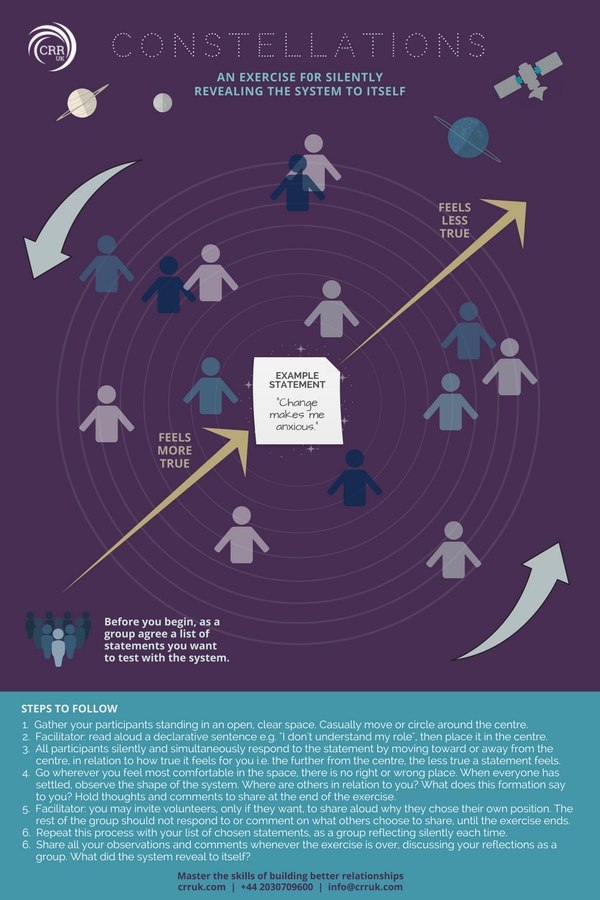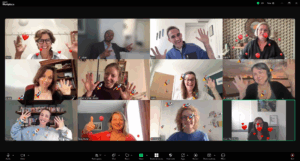Constellation Exercise: Revealing the System to itself
Constellation is a popular exercise with a simple premise: a group of people express themselves wordlessly, by arranging themselves in proximity to a central focus – an idea, concept or statement – in relation to their feelings about it.
As a physical exercise, it can generate powerful energy in a room. It’s great for ‘breaking the ice’ with or warming up a new group, particularly as it allows more reserved members to express themselves without having to speak up.
It’s also really useful when a group is struggling to understand each other, or where dialogue becomes toxic. The shift to silence and physical expression can open up powerful new opportunities for communication and connection.
When the system sees itself, it knows what to do
We introduce a version of the Constellations exercise in our ORSC introductory modules, both ORS@Work and Fundamentals. We also explore another variation, Paper Constellations, during Module 3: Geography. It’s a tool that perfectly complements systems thinking and a systemic approach.
The Constellation exercise recognises the system and its wisdom. We are encouraged to observe the system, and to listen to and together process what the system has to say.
Constellations has a wide range of useful applications. I’ve seen it used successfully with workplace teams, board members, even couples. The exercise works best when participants agree a specific subject or theme. For example, workplace teams may have a problem or challenge to address emerging from a major organisational change. Or an executive team might need help to uncover the right priorities when developing a new organisational strategy.
Through Constellations a group is facilitated to establish exactly where they all stand on a specific topic or issue. This may well be for the first time. Often this exercise reveals what was previously unknown or unacknowledged. It can be incredibly helpful for revealing what the real issues are within any system – be it a relationship, a team or an organisation – and create valuable opportunities to plan for and negotiate change.
Feel free to download the below Constellations infographic and try it with your own systems – at work or a home. Just right click on the guide below and save as a download.

How to use Constellations
To get the most from this exercise, you’ll need a neutral facilitator. Ideally this would be an external coach, someone not usually a part of the system. Once you’ve agreed the specific topic, theme or issue you’ll be focused on, you might ask everyone in the system to contribute individual statements to use in the exercise, rather than the facilitator impose them. This way everyone has a chance to bring what matters most to them to the attention of the system.
During the exercise, while each statement is responded to silently in turn, it can be powerful after each round to invite individual participants to share aloud, if they feel compelled, how they feel and why they settled at their place in the room. However, interaction with the others, in the form of comments or responses, should be discouraged until after the exercise is over. Make sure to take plenty of time, after each new statement is placed in the centre, to quietly reflect on everyone’s relative position in the system.
Often this exercise will naturally reach the point where the system has revealed itself, and the group is ready to stop and talk about what they’ve learned.
Feel free to download the above Constellations image guide and try it with your own systems – at work or a home. Just right click on the guide above and save as a download. We’d love to hear how you get on!






